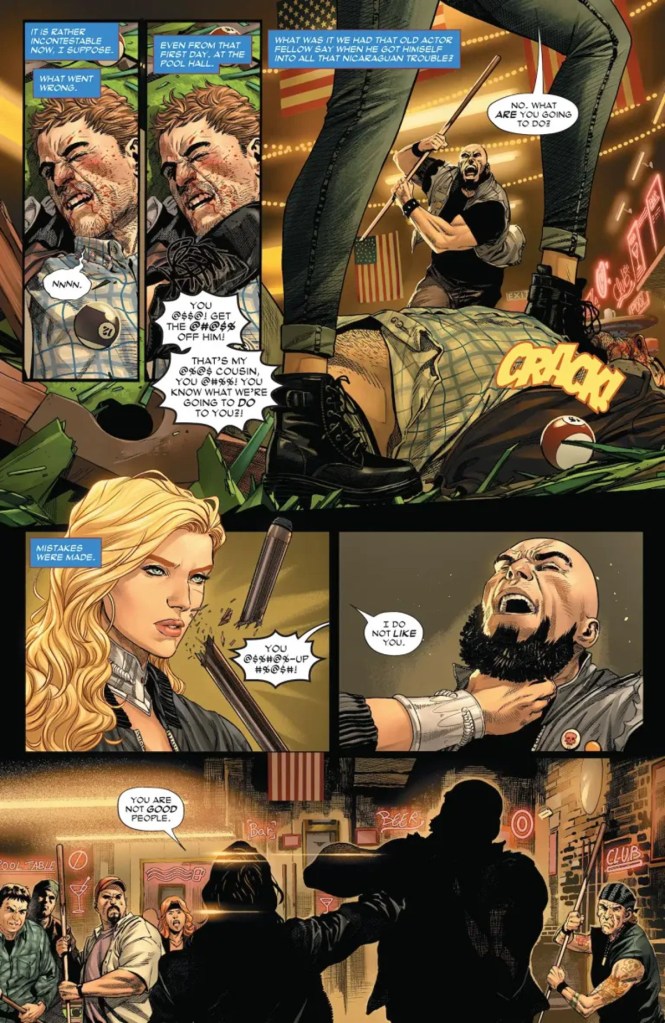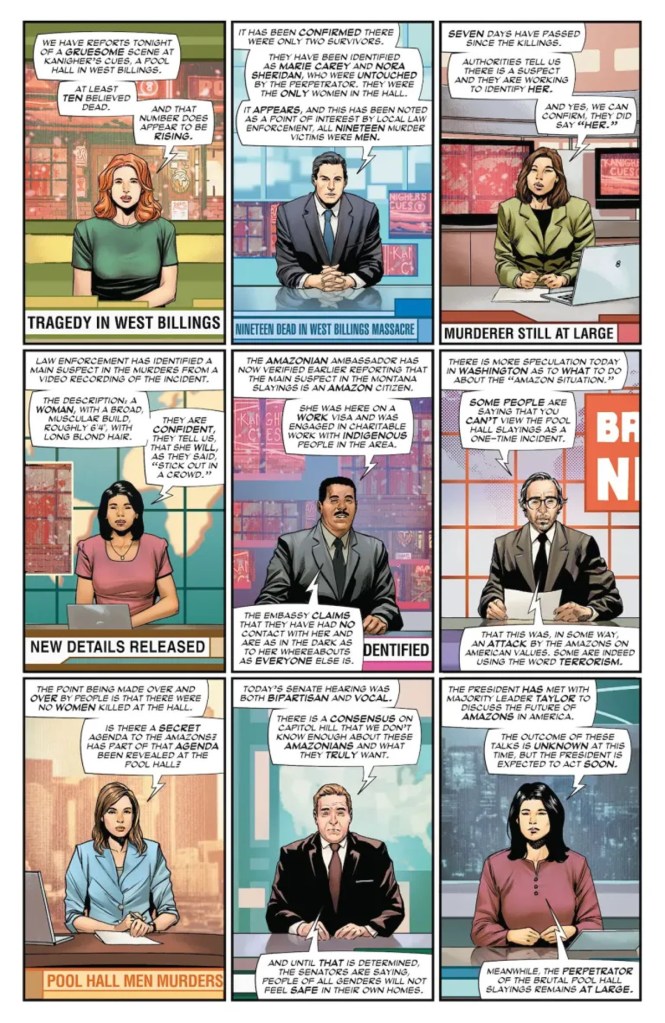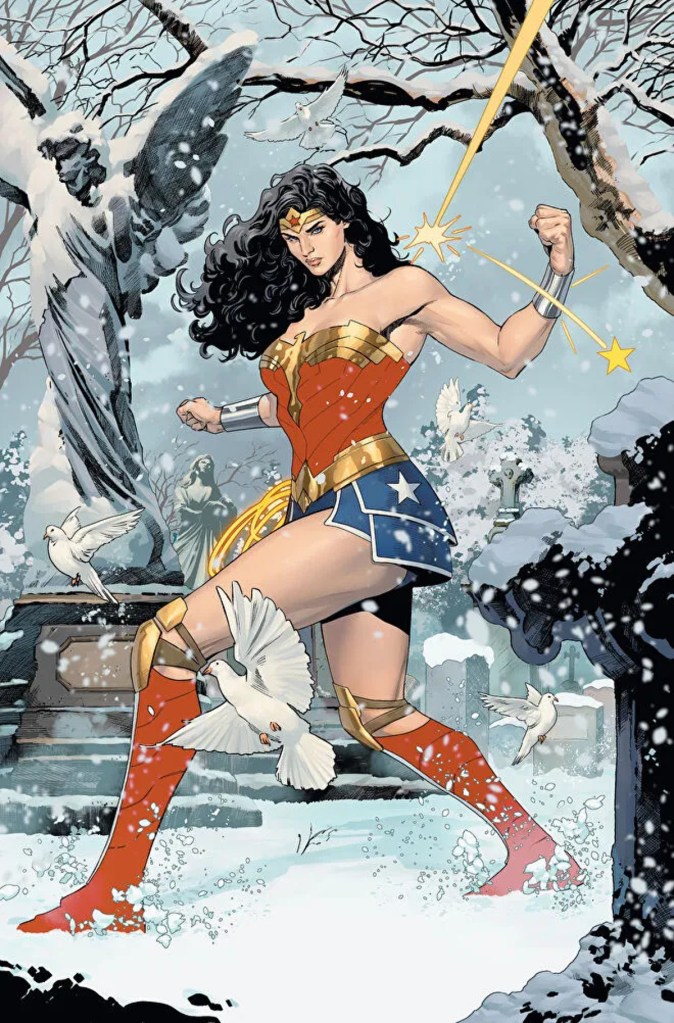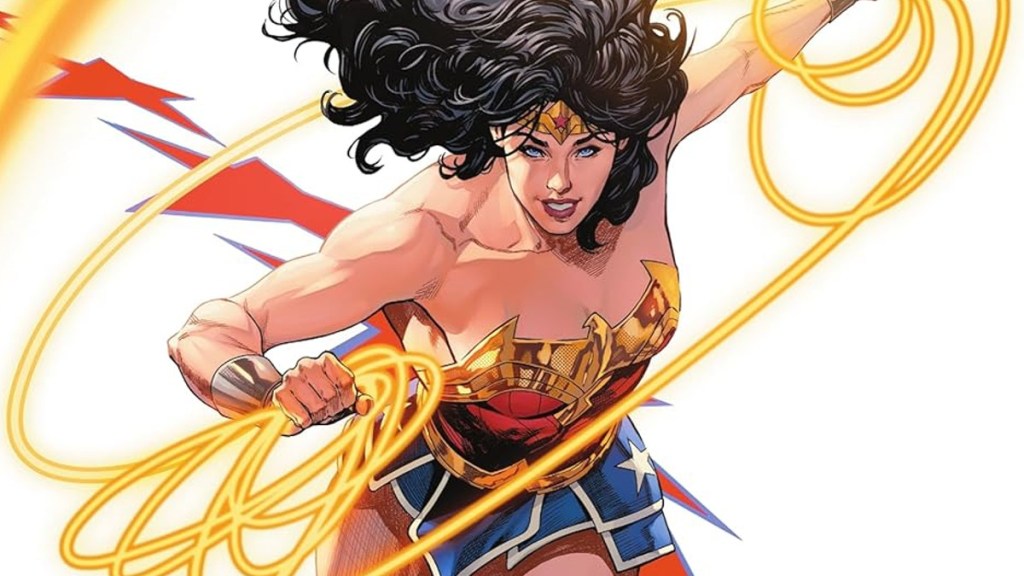The Dawn of DC publishing initiative promised to “forge the future, one hero at a time.” In the case of the new Wonder Woman series, however, DC Comics is reviving a past best forgotten.
Strangely, the title character is largely absent from this premiere issue. The first two thirds of the book are devoted to establishing the new status quo of America in the DC Universe. Specifically how the United States government comes to declare war on the Amazon homeland of Themyscira.

The trigger for this unlikely event is reportedly one Amazon killing nineteen men at a pool hall in West Billings, Montana, after one idiot got handsy. Within the span of one page, Congress has outlawed Amazons in America. This, in turn, leads to the creation of the Amazon Extradition Entity (AXE). This paramilitary strike-force is charged with taking out any Amazon immigrant who refuses to go back where she came from.
Tom King’s Amazons Attack
This general concept of America going to war with the Amazons may ring a bell with long-time comic readers. The exact same chain of events played out in the 2007 Wonder Woman event Amazons Attack. Indeed, the original story is referenced, with Sgt. Steel, who was “humiliated during the attack of the Amazons on our country some years prior,” placed in charge of AXE.
The key difference is Amazons Attack built upon several months of stories spread across multiple titles. Here, writer Tom King facilitates a movement against the Amazons with one page full of talking heads. This is in keeping with King’s history of telling rather than showing in his stories.

King also has a tendency to bend established characters to fit the story he wants to tell. In this case, he uses Amazons as a metaphor for how America treats real immigrants. While this idea is not without merit, soldiers gunning down Amazons with special bullets is far less interesting than the idea of Amazons immigrating to America in the first place.
In this, Wonder Woman #1 invites comparison to King’s Heroes In Crisis. That 2018 limited series was built around the idea of a secret clinic which offered confidential mental health treatment to superheroes. This promising concept was ultimately ignored, so King could write a “who-done-it” after several heroes in therapy were unceremoniously murdered.
It beggars belief that King built his parable on the foundation of such an infamous Wonder Woman story. The original Amazons Attack drew criticism for its uneven portrayal of Amazon culture and Wonder Woman being incidental to the plot. Here, the few Amazons depicted are victims, or content to wait for Diana to fix things.
Amazing Art For The Amazing Amazon

As uneven as the story of Wonder Woman #1 is, the artwork is top notch. Artist Daniel Sampere was one of DC Comics’ secret treasures for many years. First finding fame for his work on the Injustice: Gods Among Us tie-in series, Sampere became famous for his smooth, streamlined style that was simultaneously detailed driven.
That unique aesthetic is on display throughout the book. Unfortunately, King’s script does not truly offer Sampere an opportunity to showcase his skill until the closing pages. Once Wonder Woman finally emerges and the action begins, Sampere cuts loose as Diana does.
Sampere’s pencils and inks are well matched by the colors of Tomeu Morey. The palettes are varied wildly, with indoor and outdoor scenes sporting unique color schemes. This is most notable in the final pages, where the sharp colors of Diana’s costume contrast with the stark winter wonderland around her.
Wonder Woman #1 is a fantastic looking comic, but the story will seem unpleasantly familiar to fans of the character. It is possible that Tom King might put a spin on the idea that will distinguish it from the original Amazons Attack. Unfortunately, this first issue offers little hope that will be the case.
Rating: 5/10
Wonder Woman #1 is now available in comic shops everywhere.








